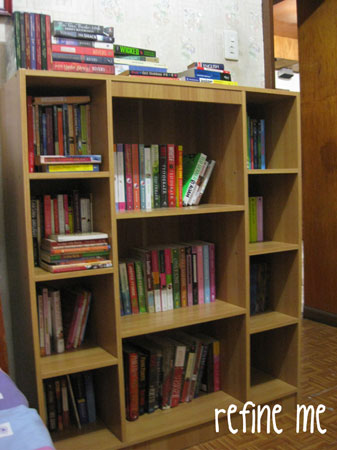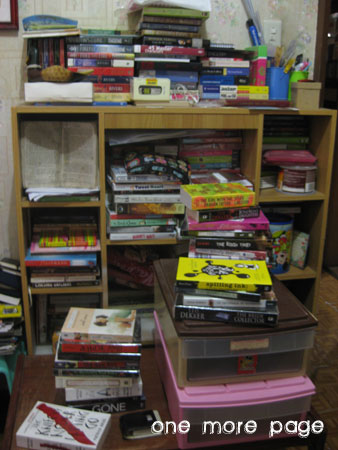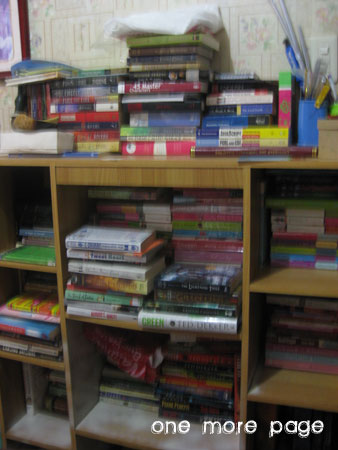 After the Storm: Stories on Ondoy by Various Authors, edited by Elbert Or
After the Storm: Stories on Ondoy by Various Authors, edited by Elbert Or
Anvil, 128 pages
The pieces in After the Storm were mostly written in the midst of and immediately after the typhoons Ondoy and Pepeng in 2009. The writers share their experiences of the typhoon, their insights and reflections, their hopes and aspirations. Long after the news media has moved on to the next big headline, After the Storm hopes to stand as written record to remind everyone that this happened. We were there. We are still here.
Two years ago, on this day, I woke up and found it was raining hard. It was a normal occurrence, of course, since it was the rainy season at that time. I was all ready to snuggle down into bed and enjoy a rainy bed weather, thanking that I was safe and sound with my family, at home.
Then this happened:

September 26, 2009
It was two years ago today that Typhoon Ketsana, locally own as Ondoy, hit our country, submerging Metro Manila underwater. It should have been a normal day, especially for us since it has never flooded in the 20 years that I lived where I lived. But that day changed everything, and in a span of hours, we found ourselves trying to secure all the important things we own away from the rising waters of a flood that got into our house, and eventually evacuating to our neighbor’s house where we stayed the next two nights.
Typhoon Ketsana/Ondoy changed my life, and while I think I have pretty much moved on from this flood, it’s still one of the things that I will never be able to forget.
So that’s why I felt that this collection of essays edited by Elbert Or, After the Storm, is pretty much a required reading for me. When you survive a disaster like this, it’s either you completely turn away and try to forget about it, or move on and remember it every now and then, using it to make you a little bit stronger. I choose the latter.
After the Storm is filled with essays from different people sharing their various experiences that happened before, during and after the typhoon. These essays range from a creative piece told from the point of view of a floating hardbound book, to a senator’s reflections on the effects of the typhoon and the resiliency of the Filipino spirit, to a person’s thoughts on volunteering and even a firsthand account of a survivor from Provident Village in Marikina, one of the hardest hits of the flood. Needless to say, this was one of the books that I should not have read in public, because I found my eyes filling with tears every now and then. It’s hard to forget the fear, the disbelief, the wondering if things will ever be the same again after this, and if we will ever even recover from this.
To be honest, I wasn’t really feeling the first part of the book. It felt like some of the entries were written just to impress people, or to pat their egos about volunteering. I couldn’t relate, and I felt like it lacked the proper empathy that victims survivors would look for. I felt exasperated at the truth that shows just how unprepared we are, and how much the government lacked, and how some people pointed fingers at that. Some talked so much about volunteering that it almost didn’t sound sincere. On the other side of the spectrum, there was one essay that talked about how it is better not to volunteer and instead go back to work and donate money because it would be more helpful. As much as it made sense, I was kind of miffed. Are you just trying to comfort yourself with the fact that you didn’t take time off from work to help out? Come on. Tell that to the people who’s on the receiving end of the help.
But then somewhere in the end, I realized that maybe, just like grieving, there is never really a single way in moving on from calamities such as this. Maybe people cope differently. Maybe some people get so moved that they have to move physically, that they have to do something about it, such as organize a sandwich drive or volunteer for various relief efforts. Maybe some people get so shocked that they can’t do anything, except maybe find a way to spread the word. Maybe some people get moved to write. Maybe, some victims start off with shock, sadness, disbelief until they find the strength in themselves and in other people to help them become survivors instead.
There are people who suffered much more than I did, but it wouldn’t change the fact that Typhoon Ketsana/Ondoy changed my life. I think and I hope it changed everyone’s lives, with it has tested us. Anthologies such as this may not be perfect, it may not contain a very accurate account of everything that happened in those dark and stormy days, but I must agree that it’s a way of reminding us that it happened. And while we must move on, we must not forget.
Two years ago today, Ondoy surprised all of us.
We were there.
Yes, we are still here.
And yes, we are still standing.
And maybe, that’s really the point of this book.
Rating: [rating=3]
My copy: paperback from National Bookstore
Cover & blurb: Goodreads
Other reviews:
taking a break



